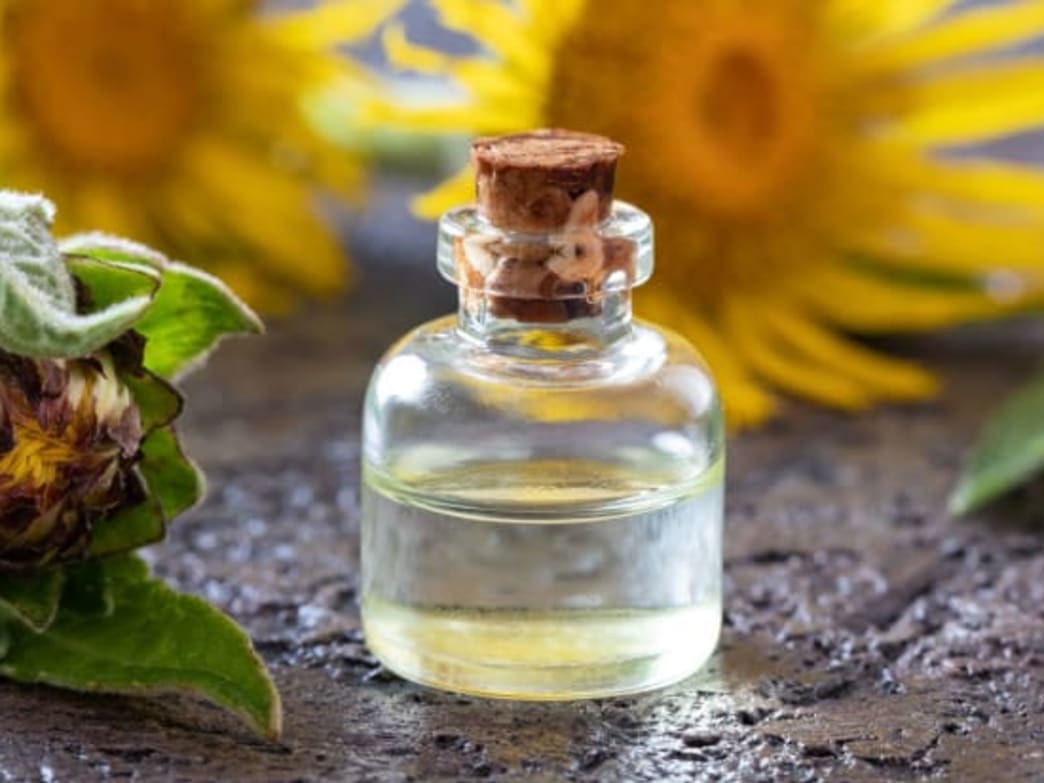
Elecampane: Health Benefits and Uses
European herbalists call elecampane root their No. 1 lung healer. Discover why, as an overall respiratory remedy, this herb is hard to beat.
History of Elecampane
When Helen of Troy was kidnapped, beautiful bright yellow flowers sprouted from the ground where her tears fell. Or so the story goes. Today, we know “Helen of the campaign” flower as elecampane, and is a major player in the lineup of superstar herbs.
Elecampane (Inula helenium) is a perennial member of the daisy family (Asteraceae), and is native to Europe and Asia—from England through southern Europe to the Himalayas. It is especially common in the British Isles, where it serves as a popular traditional medicine. According to British herbalist David Hoffmann, it grows “where the tree falls in the forest.”
The root, which is rich in the soluble fiber inulin, is thick, branching, and gelatinous, with a slight camphor scent. The taste of elecampane is quite potent, often described as bitter and pungent.
Did You Know?
Aromatherapists recommend elecampane essential oil for clearing lung congestion and strengthening immunity.
Using Elecampane for Lung Health and Cold Relief
It’s a hard call, but I would put this root at the top of my global list of general lung-supportive herbs. In any condition that involves the lungs, elecampane is likely to produce some benefit. That makes it an ideal herb to have around the house to use at the first sign of sniffles, cough, sore throat, chest congestion, or a sinus infection.
You can use elecampane root for just about any respiratory condition, but it’s especially effective at easing colds with substantial mucus and “wet asthma.” It heats up the body and drys out tissues by opening the pores, releasing sweat, and thinning mucus.
This useful herb is widely employed for its expectorant and cough suppressant
qualities, and it’s particularly good for irritating bronchial coughs, especially in children. Although it has a profound healing effect, it’s safe for kids, and is often recommended by herbalists at the first sign of pediatric lung congestion or cough. In the 19th century, elecampane became famous when the Eclectics used it to treat bacterial infections with heavy, thick, yellow to green mucus. And historically, elecampane has been used to treat asthma, bronchitis, and chronic cough in the elderly.
Research on elecampane is lacking. But according to an in-vitro study in the British Journal of Biomedical Science, elecampane showed antimicrobial properties against staph, including MRSA. And a 2019 study from the journal Antioxidants showed that elecampane had anti-inflammatory effects in the lungs.
Elecampane for Liver Protection
Although not the main claim to fame for this herb, liver protection is another benefit of elecampane. Recent experiments with elecampane have born this out.
Research is slowly unearthing new uses. Recent studies, especially from China, show potential anti-cancer properties. Chinese research from 2017 found benefit for rheumatoid arthritis, which fits with elecampane’s anti-inflammatory profile.
The active constituents of elecampane are not well established, but are thought to be bitter terpenoids and sesquiterpenes, including the stearoptene helenin.
How to Take Elecampane
Elecampane is often combined with herbs that have similar qualities such as mullein and yerba santa. As a tincture, use 1 Tbs. per day. For capsules, follow label directions. To make your own tea, boil 10–30 grams of dry, chopped elecampane root; let steep for 15 minutes, and strain before drinking.
Although this herb is considered safe, avoid it during pregnancy and breast-feeding. Also, if you are allergic to plants in the Asteraceae family (e.g., ragweed, marigolds, daisies, and feverfew), avoid elecampane. It can also cause drowsiness in some people.
Written by Karta Purkh Singh Khalsa for Better Nutrition and legally licensed through the Matcha publisher network. Please direct all licensing questions to legal@getmatcha.com.

